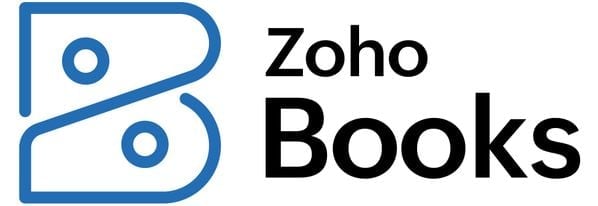What Is Bookkeeping? Definition, Tasks, Terms to Know
Good bookkeeping is necessary to have the financial information you need to make sound business decisions.

Many, or all, of the products featured on this page are from our advertising partners who compensate us when you take certain actions on our website or click to take an action on their website. However, this does not influence our evaluations. Our opinions are our own. Here is a list of our partners and here's how we make money.
Bookkeeping is broadly defined as the recording of financial transactions for a business. It’s a key component of the accounting process and can be done as frequently as daily, weekly or monthly. Accurate bookkeeping is vital to filing tax returns and having the financial insights to make sound business decisions.
The evolution of bookkeeping
Modern bookkeeping was formally established in the late 15th century when Italian mathematician and Franciscan monk Luca Pacioli described double-entry bookkeeping in his book, “Summary of Arithmetic, Geometry, Proportions and Proportionality.”
While the basics of accounting haven’t changed in over 500 years, the practice of bookkeeping has. Bookkeeping was once done manually using actual books called journals and ledgers. Because bookkeeping is based on double-entry accounting, each transaction affects two accounts — one gets debited and the other is credited. These debits and credits had to be manually recorded and balanced.
The advent of accounting software significantly lessened the tediousness of bookkeeping by handling debits and credits for you in the background. And technologies like optical character recognition (OCR) and bank feeds have come just short of fully automating the traditional bookkeeping process. Data entry can now happen as soon as you snap a photo of a receipt with your smartphone. And reconciliations happen almost in real time through daily bank feed maintenance, making the end-of-month closing process a snap. Now one bookkeeper can manage the bookkeeping for several businesses in fewer than eight hours a day.
What is a bookkeeper’s job?
Bookkeeping means different things to different people. Some bookkeepers focus solely on “write up” work, which basically consists of compiling the books quickly, usually for tax preparation purposes. Other bookkeepers provide “full-charge” services and can even serve as a financial controller for your company.
Full-charge bookkeeping tasks can be broken down into four broad categories.
1. Data entry
Data entry involves entering your business’s transactions into your bookkeeping system. As mentioned above, a lot of the data entry now happens automatically, either through OCR or bank feeds.
There's more to data entry than just putting the numbers into your software, though. Proper data entry includes:
Source document verification: This step usually gets skipped when doing your bookkeeping solely from bank feeds. Ideally, you want to make sure your data entry comes not from the bank feed, but from source documents like receipts or bills. This ensures that only valid business transactions are being entered into your books. Today’s bookkeeping software allows you to snap a photo of or scan in your source documents, and then OCR technology will extract the pertinent information and do much of the data entry for you. This means you can maintain source document verification while still taking advantage of the time-saving technology of your accounting software.
Accurate classification of transactions: Each entry into your bookkeeping system impacts at least two accounts in your business’s chart of accounts. Proper data entry — or data management if you rely on automation for your data entry — ensures that transactions are being posted to the correct accounts. Accurate classification of transactions enables you to produce financial management reports that can be used to make strategic business decisions.
Accurate identification of transactions: One downfall of some bookkeeping software is that the artificial intelligence behind it can make mistakes a human wouldn’t make while entering the data. The most common of these mistakes is assigning the wrong payee name to a transaction. You must make sure your transactions are being identified correctly. This is especially important for payments you make to vendors who will need a 1099 form at the end of the tax year.
2. Office management
Often, office management tasks like customer billing, paying vendors and payroll are considered to be bookkeeping tasks. Although accounts receivable, accounts payable and payroll do impact your books, some of these tasks can be managed by a person in your company other than your bookkeeper. Others, like payroll, can be outsourced to independent companies that specialize in the task.
If your bookkeeper bills your customers or pays your vendors and employees, make sure you have proper checks and balances in place to mitigate the possibility of fraud.
3. End-of-period closing
Your books should be closed at the end of each accounting period. End-of-period closing includes:
Reconciling all bank, credit card and loan accounts.
Reconciling accounts payable and accounts receivable.
Making any adjusting journal entries for prepaid revenue or expenses, depreciation or other unusual transactions.
Reviewing the financial statements for accuracy and completeness.
Locking the books so they can’t be changed after the end-of-period closing has been completed (optional, but highly recommended).
4. Internal management reports
Only an accountant licensed to do so can prepare certified financial statements for lenders, buyers and investors. However, your bookkeeper can generate internal management reports for your business.
There are three common reports your bookkeeper can prepare:
Your balance sheet is a snapshot of your assets, liabilities and equity as of a certain date.
Your income statement (also known as a profit and loss statement) details your business’s income and expenses for a period of time (a month, quarter, year, etc.). It shows whether your business has earned a profit or experienced a loss.
Your cash flow statement reconciles the income statement to the balance sheet and answers the question, “Where did the cash go?” for accrual-basis businesses.
Your bookkeeper might also prepare other auxiliary reports for your business, like accounts payable and accounts receivable aging reports. You can use these to make business decisions, but they should not be presented as audited, certified or official financial statements.
It’s important to note that not all lenders and investors require certified or audited financial statements. However, it’s still a good idea to ask an accountant to review your bookkeeper’s financial statements for accuracy and completeness prior to submitting them to a third party for consideration. And even if you’re not looking for funding, consider asking an accountant to review your financial statements at least once a year.
» MORE: Best online bookkeeping services
What is the difference between bookkeeping and accounting?
Bookkeeping is largely concerned with recordkeeping and data management. Bookkeepers make sure the information in the books is accurate and that the books are reconciled each month. In essence, they complete the first step in the accounting process.
Accountants, on the other hand, use the information provided by bookkeepers to summarize a business’s financial position and render financial advice to the business owner. Many accountants also prepare tax returns, independent audits and certified financial statements for lenders, potential buyers and investors.
Accountants typically have at least a bachelor’s degree in accounting, and many go on to become certified public accountants (CPAs) or certified management accountants (CMAs). Bookkeepers might also have degrees in accounting, but most have either technical certifications or on-the-job experience.
Common bookkeeping terms
Bookkeeping has its own language, and bookkeepers and accountants sometimes forget business owners might not be fluent in it. Here are some common bookkeeping terms:
The accounting equation: The accounting equation is the key formula that keeps your books in balance. That equation is Assets = Liabilities + Equity. You can see the accounting equation in action in your business’s balance sheet.
Assets: What your business owns. Assets include cash, buildings, vehicles, patents and open invoices due from customers (accounts receivable), just to name a few.
Liabilities: What your business owes. Liabilities include credit card balances, amounts due to vendors (accounts payable), loan balances and tax liabilities that haven't yet been paid.
Equity: What is owed to the owner or shareholders of the business. Equity includes money paid in by the owner (contributions), money the owner has earned but not taken from the business (retained earnings) and other types of contributions like stock issued.
General ledger: The general ledger is where financial transactions are recorded and is made up of assets, liabilities, equity, income and expenses. These five types of accounts comprise the books for your business.
Chart of accounts: The list of categories you use to classify your business’s transactions. Think of the chart of accounts as a sort of filing system for your business’s transactions.
Debits and credits: Each bookkeeping transaction has two sides (remember, it’s called double-entry accounting). One side of the transaction is the debit side, and the other side is the credit side. Assets and expenses are increased by debits and reduced by credits. Income, equity and liabilities are increased by credits and reduced by debits.
Accrual basis and cash basis: Accrual-basis accounting recognizes income and expenses when they are incurred. Cash-basis accounting recognizes income when payment is received and expenses when payment is made. Check out NerdWallet’s accrual vs. cash basis accounting guide for more details.
Reconciliation: The process of verifying the balance of certain accounts (checking, credit cards, loans, etc.) against statements from an outside source, usually a bank.
Income: Money your business earns through sales.
Expenses: Money your business spends on operations and overhead.
Cost of goods: Money your business spends to produce income. Read NerdWallet’s cost of goods sold explainer to learn more.
Profit: What your business has earned after cost of goods and expenses are subtracted from income. Profit is not the same as cash on hand.
Accounting software | Pricing | Best for |
|---|---|---|
$30 per month and up. | Overall accounting software. | |
$15 per month and up. | Unlimited users. | |
Free and up. | Mobile-first features. | |
$19 per month and up. | Freelancer-friendly features. (Least expensive plan does not include double-entry accounting reports.) | |
Free. | Free, unlimited invoicing. | |
$1,481 per year and up. | Industry-specific features. |
A version of this article was first published on Fundera, a subsidiary of NerdWallet.
| Product | Starting at | Promotion | Learn more |
|---|---|---|---|
 QuickBooks Online NerdWallet Rating Learn more on QuickBooks' website | $35/month Additional pricing tiers (per month): $65, $99, $235. | 50% off for first three months or free 30-day trial. | Learn more on QuickBooks' website |
 FreshBooks NerdWallet Rating Learn more on FreshBooks' website | $21/month Additional pricing tiers (per month): $38, $65, custom. | 70% off for 4 months. 30-Day Money Back Guarantee. | Learn more on FreshBooks' website |
 Xero NerdWallet Rating Learn more on Xero's website | $20/month Additional pricing tiers (per month): $47, $80. | 90% off for 6 months. | Learn more on Xero's website |
 Zoho Books NerdWallet Rating Learn more on Zoho Books' website | $0 Additional pricing tiers (per month): $20, $50, $70, $150, $275. | 14-day free trial of the Premium plan. | Learn more on Zoho Books' website |





